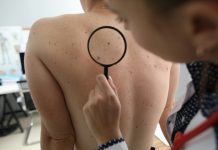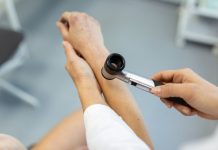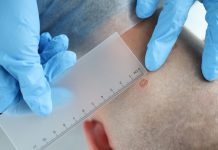
In a new study, researchers have discovered the mechanism through which ultraviolet radiation, given off by the sun, damages our skin.
The research was conducted by a team at Binghamton University, State University of New York.
The cosmetics industry is a huge multibillion-dollar business, and they’re all trying different things to add to their sunscreens to make them better at protecting the skin.
Up until this point, however, there have been a lot of studies about skin damage, but none that properly look at how UV affects the mechanical integrity of the skin.
Ultraviolet radiation – which the human eye can’t perceive – is broken down into four categories depending on wavelength and photon energy.
Previous studies have documented how each type of UV radiation penetrates to different depths into the skin and that prolonged exposure can lead to skin cancer, but exactly how it damages human skin in other ways has received less attention.
Researchers from the cosmetics industry have debated for years whether UVA is worse than UVB for causing photodamage, which leads to the early onset of wrinkles and increased tissue fragility.
In the new study, the team used samples of female breast skin – chosen because it is typically exposed only to low levels of sunlight – that were subjected to various wavelengths of UV radiation.
What they found is that no UV range is more harmful than another – rather, the damage scales with the amount of UV energy that the skin absorbs.
A more important discovery, however, is the mechanism for how exactly UV damages skin.
The study shows that UV weakens the bonds between cells in the top layer of skin by affecting proteins that help the cells to adhere together. That’s why sunburn leads to skin peeling.
Building on the findings, the researchers are doing further research about how UV radiation affects deeper layers of the skin.
They say the most important takeaway, for now, is that skin protection is important no matter what season of the year it is.
The lead author of the study is Zachary W. Lipsky, a biomedical engineering Ph.D. candidate at Binghamton University.
The study is published in the Journal of the Mechanical Behavior of Biomedical Materials.
Copyright © 2019 Knowridge Science Report. All rights reserved.



